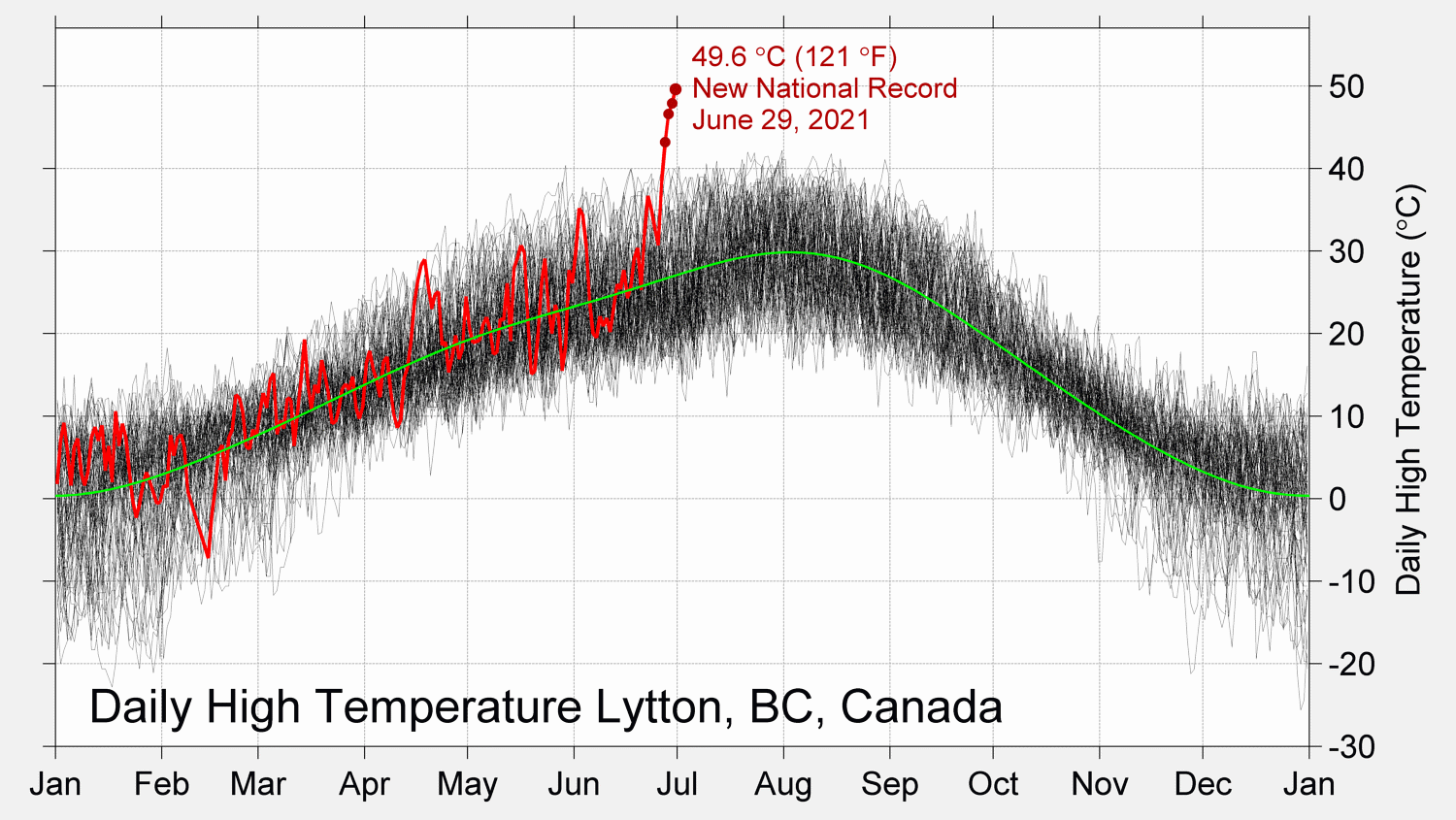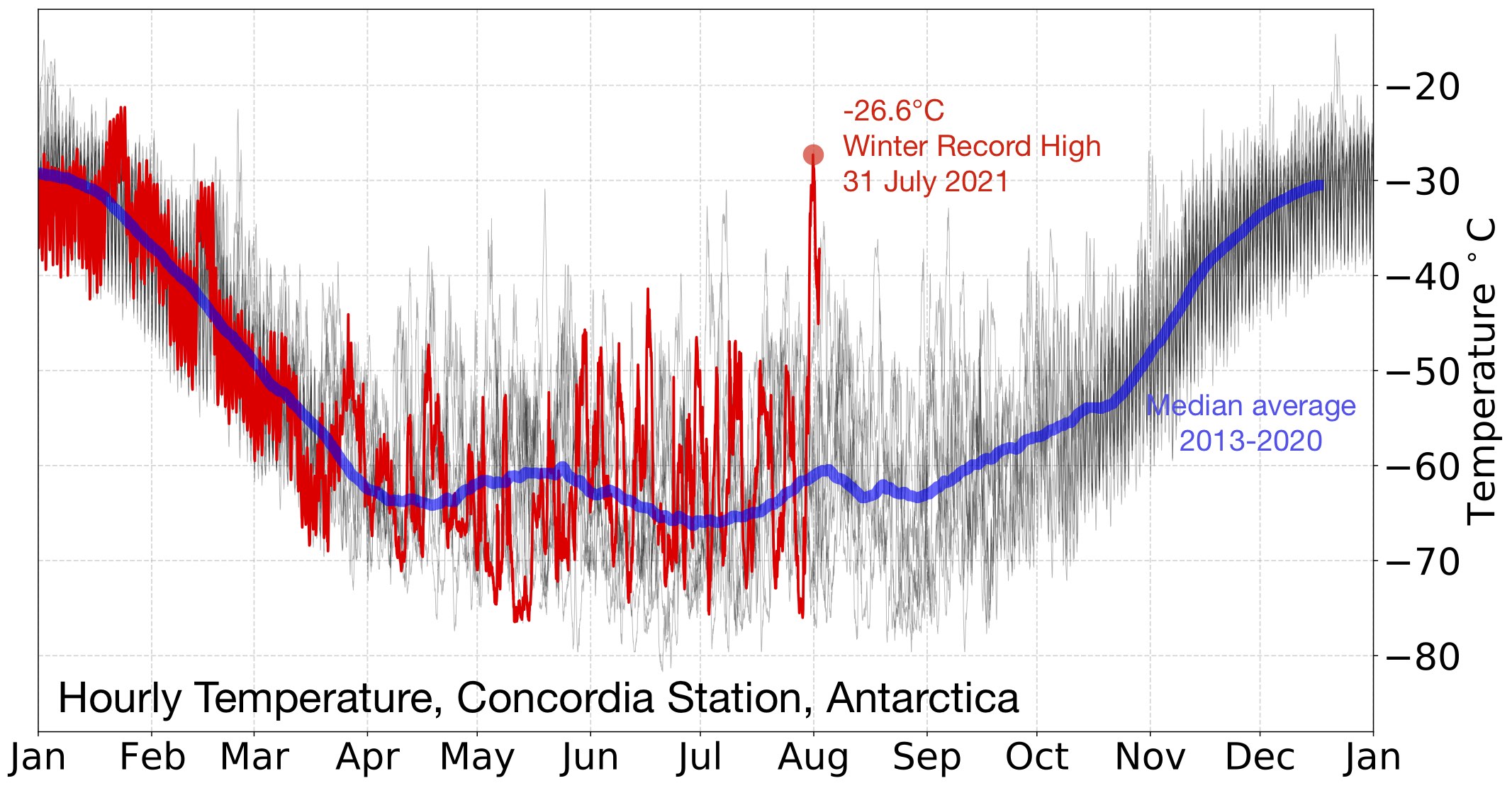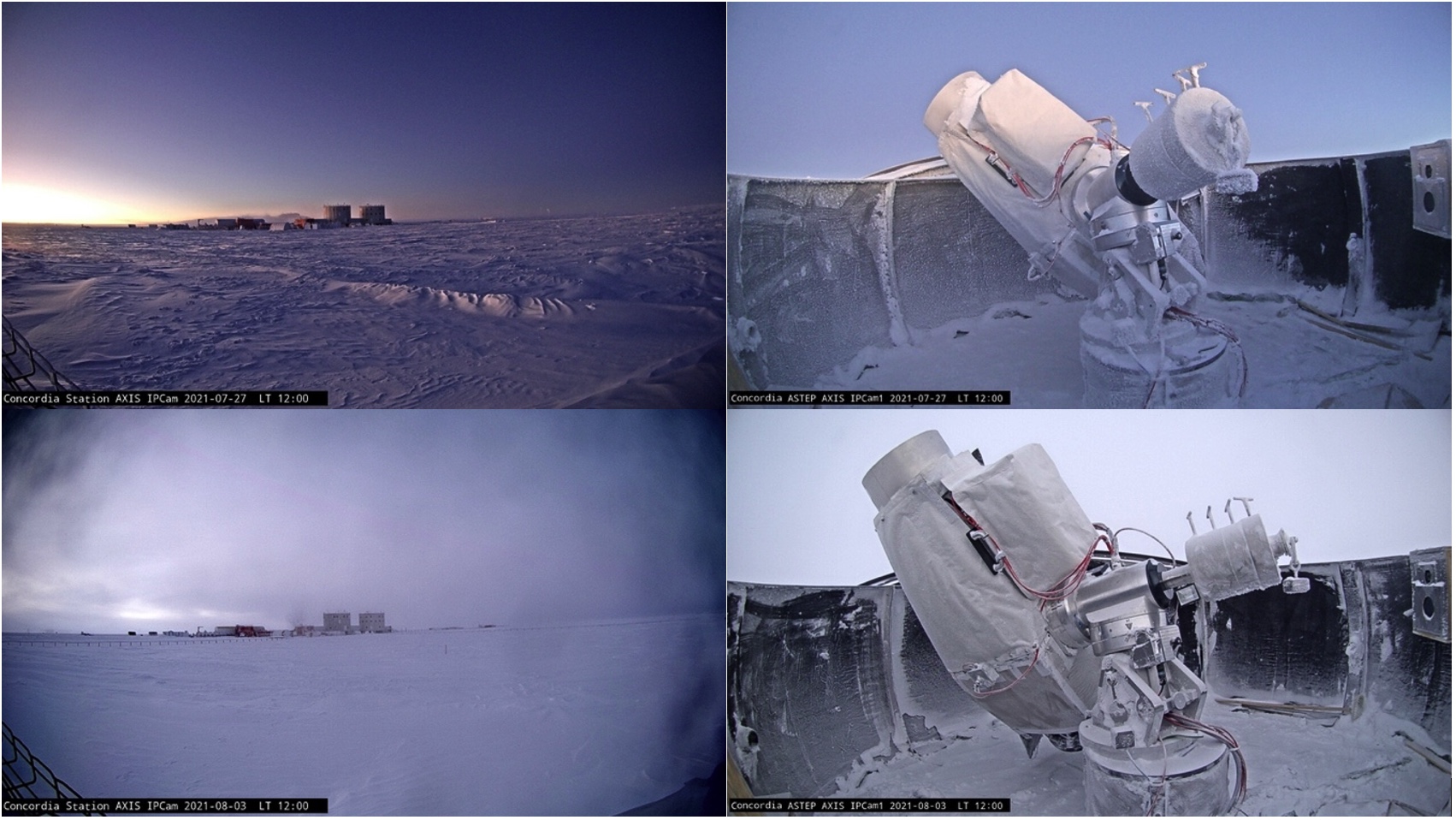Global warming leads to record heat in the world. This summer, the formation of a "heat dome" led to record-high temperatures in the western Canada and USA (see Figure 1). A possibly similar phenomenon was observed and recorded by our temperature sensors on the ASTEP telescope and the measurement from the Concordia weather station, all located at the heart of the Antarctic continent at more than 3200 meter elevation.

Figure 1 : Daily high temperatures measured in the town of Lytton (British Columbia, Canada). Temperatures over many years are indicated in black, the daily average in green, and the measurements for 2021 in red [From Robert Rohde].
On 31 July 2021, the thermometers at Concordia went up to reach… -26.6°C ! What seems like a really low value is in fact a record heat for the winter period at the station, on the basis of our measurements since 2013. These show that the winter temperature is on average about -65°C (Figure 2). The temperature on that day was thus almost 40°C over the seasonal averages!

Figure 2 : Hourly temperature measurements at the Concordia station, Antarctica. In black are shown measurements since 2013, in blue the daily median temperature, and in red the temperatures measured in 2021.
Even if this winter-over temperature is a record for Concordia's winter (since 2013 at least), these fast fluctuations of the temperature are not completely exceptional. These usually corrspond to periods of bad weather, the clouds preventing the radiative cooling of the atmosphere. This is what shows the images of the ASTEP web cameras, showing a completely cloud-free sky a few days before 31 July, and a completely clouded-out sky afterwards (on Fig. 3, a few days after the arrival of the depression).

Figure 3 : Images of the ASTEP webcams showing the Concordia station (left) and the ASTEP telescope (right), before the weather perturbation, on 27 July 2021 and with a clear sky (top), and after, on 3 August 2021, with a cloudy sky (bottom). The photographs were taken at noon local time. Even thought the Sun never rises at this period of the year, the luminosity increases substantially around noon.
Is this record heat at Concordia directly linked to global warming? This is likely, but one would need a much more complete study to demonstrate this.
Thus, even when surveying the stars, we must continue to look at our planet! ;-)
Tristan Guillot
Crédits : IPEV/PNRA/ASTEP/C. Genthon




